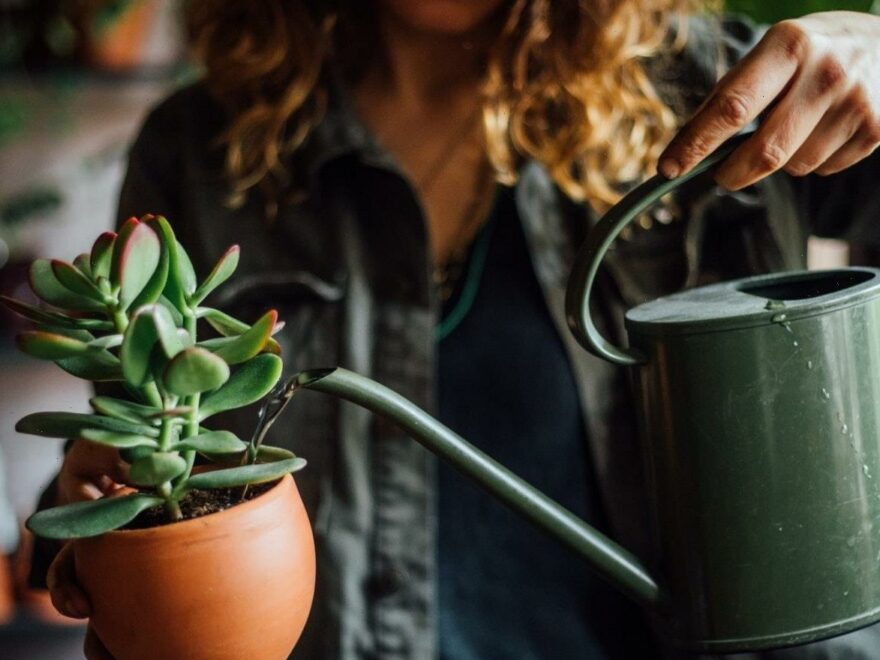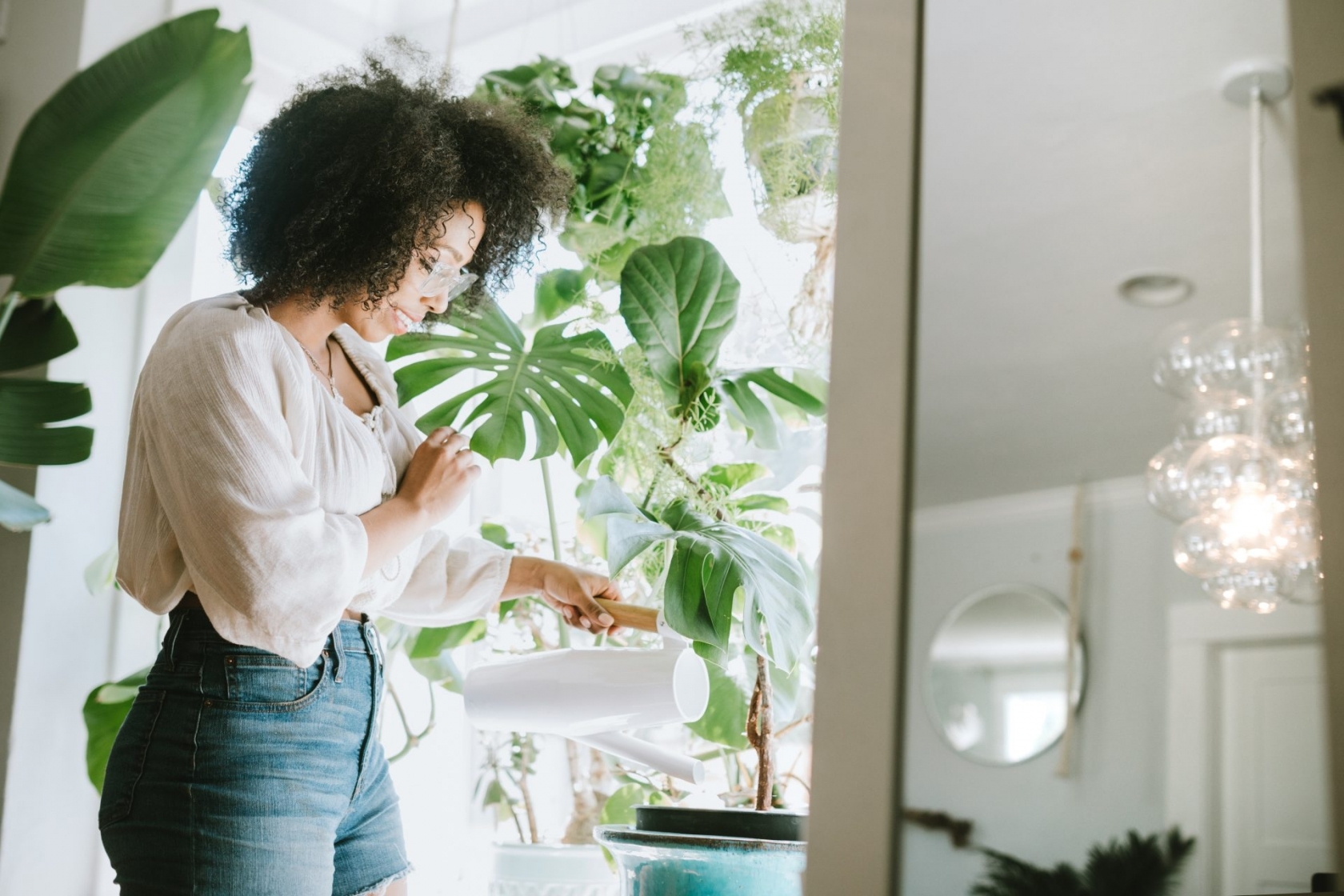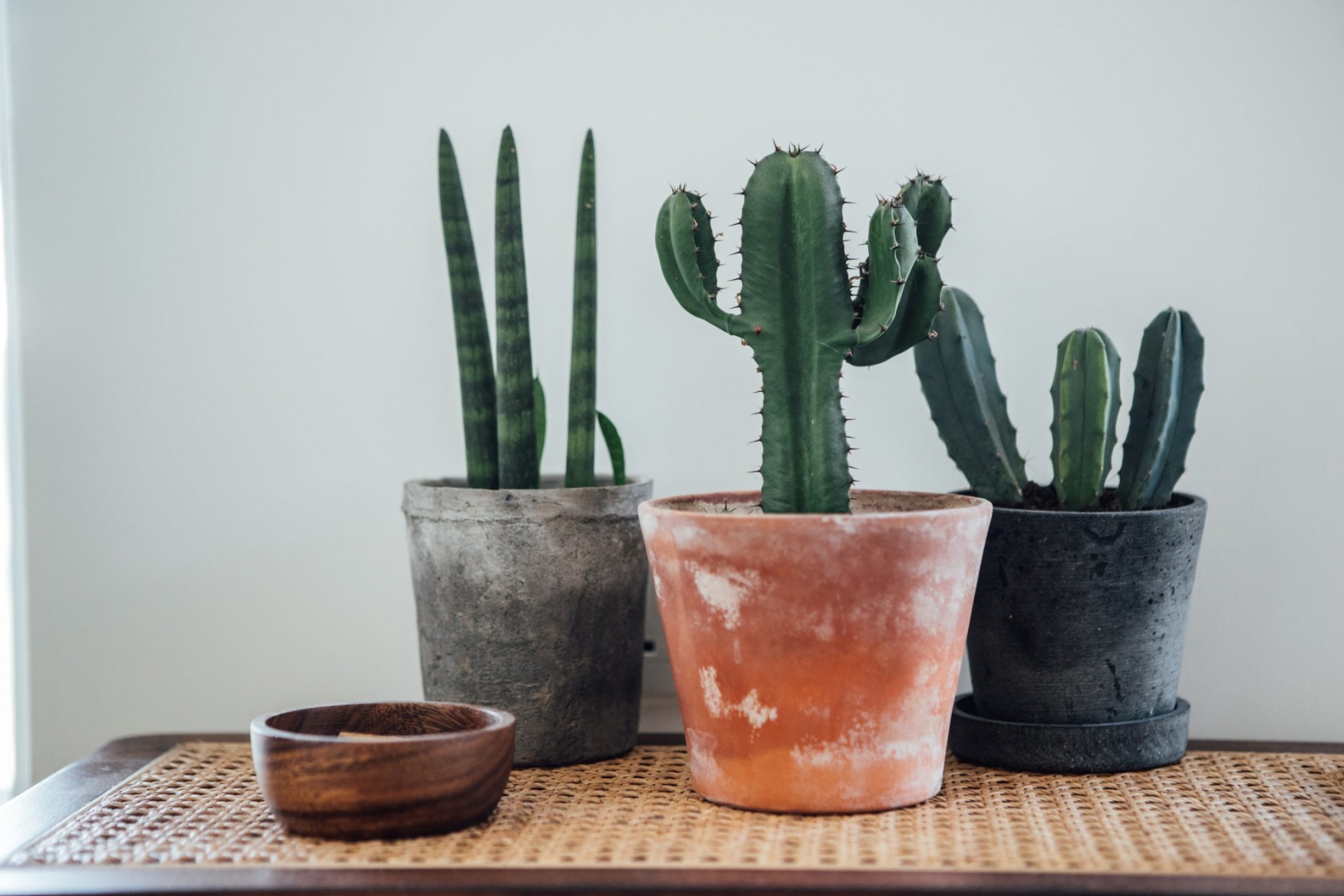Overwatering is one of the most common problems that your plants are likely to face during autumn and winter – here’s how to avoid it.
From providing regular waterings to finding a bright spot, most of us know the basic things we need to do to keep a plant alive. But despite this, many of us still struggle to keep our leafy friends happy and healthy – even when it seems like we’re ticking off the basics.
However, just because you put a plant on a windowsill and give it lots of water, it doesn’t mean it’ll be OK. Because while water and light are the building blocks of plant care, giving your plant too much or too little of each could also put its health at risk.
In particular, new plant parents tend to struggle with overwatering. While you might think your plant needs lots of water all year round to survive, that’s not always true – and giving your plant more water than it needs can quickly cause problems.
“Believe it or not, when it comes to our leafy friends, there is such a thing as caring too much,” explains Jo Lambell, founder of the online plant shop Beards & Daisies and author of the plant care guide The Unkillables.
“Overwatering is quite simply when your plants are given way more water than they can handle. It’s more common to overwater your plants in the winter months when most plants go into their restful dormant state – so it’s important to adjust your care pattern seasonally.”
In short, it’s important to understand how much water your plant needs as we head towards winter, and how to recognise the signs of overwatering just in case you go overboard.
To find out more, we asked Lambell to explain more about overwatering and how to avoid it. Here’s what she had to say.
Signs of overwatering
“Luckily, your plants aren’t afraid to tell you off if you’ve been giving them too much of a good thing,” Lambell explains. “There are some really clever tell-tale signs to look out for that are a clear indication that you’ve been overwatering your plants.”
Here’s a selection of the signs you should keep an eye out for:
1. Yellow leaves: although yellow leaves are also a sign of underwatering, those caused by overwatering will be soft, mushy and wilted, not crispy.
2.Shedding leaves: both old and new leaves falling from your plant is a tell-tale sign of overwatering.
3.Mould: if the soil remains damp for too long bacteria can grow, causing mould to grow on the surface. This mould can also spread to your plants if you’re not careful.
4.Brown spots: if your plant’s leaves develop brown spots with yellow rings around them, this could be a sign that your plant has bacteria caused by overwatering.
5. Fungus gnats: these annoying little flies lay their eggs in compost and like dark, damp environments, so they’re attracted to soil that has been moist for an extended period of time.
Why overwatering kills plants
While plants need water to survive, giving your plant too much water can cause it to pool at the bottom of the pot or in the soil, resulting in problems in the short and long-term.
“It may seem almost nonsensical as it’s the one thing our plants thrive on and need to survive, but overwatering is so dangerous because it essentially cuts off the oxygen supply to your plants,” Lambell explains.
“Just like us, our plants need plenty of space to breathe and the issue with overwatering is that the water can become backlogged in the soil of your plants, taking up that crucial breathing space.
“While the plant leaves do the hard work of extracting as much carbon dioxide as possible, it’s the plant’s roots that absorb oxygen. If your soil is waterlogged, then your plant’s roots just can’t get that vital oxygen they need to survive and thrive.”
Lambell continues: “If overwatering isn’t picked up in its early stages, then you also run the risk of your plant suffering from root rot.
“Caused by waterlogging or poor drainage, root rot stops your gorgeous greenery from being able to access the essential nutrients, oxygen and water, that it so badly needs, which can sadly kill your plant.”
How to avoid overwatering
Although lots of plants can be saved once they begin to show signs of overwatering (usually by moving them to a different pot with lots of drainage holes or cutting down on watering for a while), the most effective way to save a plant from overwatering is to put measures in place to stop it happening in the first place.
These include researching how much water your plant needs to stay healthy (most plant care guides will say how often each plant type needs water), as well as ensuring water isn’t allowed to gather in your plant’s soil.
To do this, Lambell recommends starting with the finger dip test. “While every plant has its own individual watering needs, we recommend feeling the top two inches of your plant’s soil.
“If it’s dry all the way through, then you’re good to go with the H2O! Follow this rule of thumb – or finger – and you’re unlikely to leave your plant feeling waterlogged.”
You should also make sure your plant’s soil is able to drain after watering, Lambell adds.
“When caring for your plant, we recommend watering until it begins to drain through the bottom of your pot,” she says. “Allow it to drain all the way through, before returning it to its home.
“Talking of gorgeous aesthetic pots, we recommend never repotting your plant directly into a decorative pot – unless it’s an outdoor plant with plenty of drainage holes in its pot.
“Keeping your plant in a smaller nursery pot with drainage holes allows you to water your plants in a sink or bathtub. That way you can let them rest until all of the excess water has drained through, before popping it back to its slightly more aesthetic home!”
Images: Getty
Source: Read Full Article


